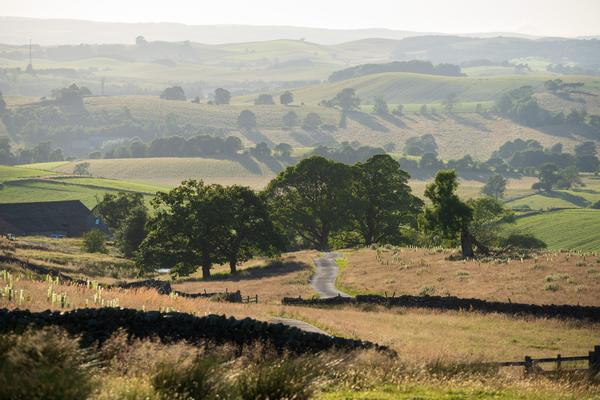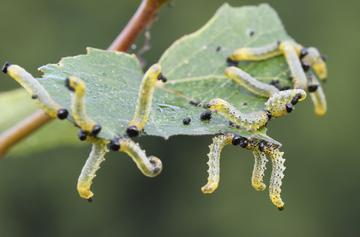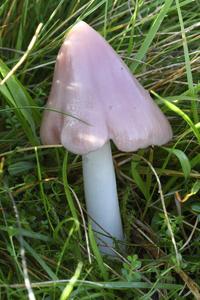Supporting local nature recovery at Broughton Sanctuary
For geneticist David Cockburn (DPhil St Catherine’s 1988), retirement from his NHS career gave him the time and space to pursue his lifelong interest in the natural world. Based in Yorkshire with the Dales on the doorstep, he’s well placed to study the region’s flora and fauna in support of local nature regeneration efforts.

Landscape at Broughton Sanctuary
Image: Simon Jauncey
It’s an alarming fact that the UK is one of the most nature-depleted countries in the world and the State of Nature Report 2023 showed that the decline is ongoing. While the UK has committed to protect 30% of land and sea for nature by 2030, actions have been insufficient, and largely left to a few private landowners have taken the bold decision to transform their land.
The challenge can feel overwhelming but I wanted to find a way to contribute directly. Researching rewilding and nature regeneration projects across Yorkshire after I retired in April 2022, I stumbled across the Broughton Sanctuary nature recovery project near Skipton. It’s a transformative scheme that is returning around 500 hectares of low-grade agricultural land to natural habitat, with intensions for regenerative agriculture on around another 170 hectares. The project recently achieved an accolade from National Geographic with inclusion of Broughton Sanctuary on The Cool List 2024: the 30 most exciting destinations to visit in 2024.
With my scientific background, the Broughton team agreed to my offer of help! My new role as a volunteer ecologist takes me to the Broughton estate a few days a month, where I locate, identify, and monitor wildlife and plant species across a landscape stretching across rolling hills from the River Aire to the moors.

Sawfly larvae - Pristiphora conjugata; 7th record for Yorkshire
Image: David Cockburn
My work provides evidence for nature recovery, in combination with structured surveys. By establishing a baseline, we can recognise newly established species or migrants. There’s no substitute for a regular pair of eyes around the estate and I have learnt to explore forms of life I am less accustomed to – I have identified 80 bryophyte species in the first year!
Everyone at Broughton believes so strongly in the project and I admire the custodian of the estate and the team for their boldness and vision. We benefit hugely from the expertise of our specialist advisor, Professor Alastair Driver, who is also Director of Rewilding Britain.
The key to rewilding is to allow nature to take charge. It is best that human interventions are restricted but some are required to kick-start the recovery. At Broughton, the surrounding landscape is depleted in woodland, so extensive tree-planting has been carried out. Drainage channels have been dug up, leaky dams have been installed into existing waterways and new wetland creation is planned. Large herbivores will be introduced to act as proxies for extinct species such as aurochs and wild pigs and ponies. These are keystone species in a natural habitat that allow a mosaic of woodland, pasture, wetland and scrub to develop. Native beavers will also be introduced to create complex freshwater habitat.

Pink Waxcap, a high diversity indicator species
Image: David Cockburn
Rewilding is great not only for nature but also for people, so the community benefits directly. This includes jobs – it has been shown that more people work in a rewilding landscape than previously when it was farmed. The site is also an amenity for visitors. As well as public footpaths, Broughton is developing a 20 mile trail around the site with information stop-off points. There are holiday cottages too for those who want to stay longer, and wellbeing events and retreats are already well established.
There are day-to-day highlights when I am on site. These are often on finding a beautiful, unusual or unexpected plant or animal – such as a Pink Waxcap fungus, a micromoth that almost nobody has heard of, or even just a common wildflower that is newly recorded on the site. In order to identify species with confidence I need to examine detail in the specimens and this enhances my appreciation of the natural world. But the landscape is beautiful too and it changes with the weather and the seasons. More change will come in future years as nature recovers at Broughton, and the vast complexity of mature fully functioning habitats become established.
Overall, the main sense of wellbeing I draw from my work is personal fulfilment at contributing to such an important project. There is huge energy at Broughton and change is happening fast.

